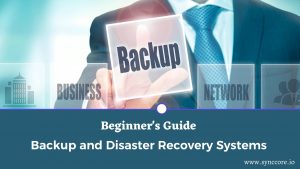Table of Contents
Areas That Are Propelling Cloud Adaptation.
Throughout the epidemic, firms are quickly deploying cloud-based software, tools, and services that are suitable for remote operations. However, the methods for deploying clouds and why they were deployed have changed. This outlook alteration can signify the ways in which modern businesses have run.
But first, let’s take a look at the current state of company IT. Businesses have benefited from the cloud since it allows them to maintain security lockdowns. Even after the outbreak has ceased to dominate decision-making, the growing consensus of information implies that many, if not most, businesses can permit a wide range of flexible and domestic operations.
Reasons to Cloud Adaptation
The theories for cloud preparation, on the other hand, are fluid. The monthly payment model made a lot more sense than the traditional enterprise package licensing, which is why cloud adoption has exploded. Firms were charged on a utility basis, as well as the cost was covered by operational expense. The cloud’s playing card was monetary flexibility, which meant that cloud customers could test concepts at minimal cost and quickly. Clouds brought the geographical attribute of “fail fast” into the organization in several aspects.
However, things have changed recently. If companies actually accept this, they may find that cloud computing costs more in the long run than on-premises computing. They do agree, however, that the value is well worth the investment. And the regions that are driving the “cloud shift,” and or second attack of cloud acceptance. Let’s take a look at speed, security, and artificial intelligence one by one.
Swiftness:
In unpredictable times, businesses need the flexibility to figure things out, change strategies rapidly, and scale their capabilities down and upon an “as needed” basis. High-street retailers are going online, restaurants are becoming delivery-only providers, face-to-face meetings are becoming Zoom calls, and advanced ‘what if’ scenario modeling for strategic change are all examples of why it’s critical to move quickly, and only the cloud provides such a cheap versatility and capability.
Security:
The argument has shifted from being viewed as just a cloud liability to being viewed as a cloud asset. Few organizations are able to protect themselves as effectively as cloud providers who run some of the world’s largest data centers because they have visibility into every conceivable incoming threat, will integrate processes to observe suspicious behavior, and may be able to afford to hire squadrons of experts in their fields. All of this shows that security has shifted from cloud negative to cloud positive.
AI:
Cloud functions as a partner on-ramp for businesses looking to explore new things, providing the tools, elasticity in cipher power, and architecture to do so. Although AI has progressed more gradually than the promotional literature suggests, the majority of people can agree that it is among the most powerful technologies which will be used to transform and expedite decisions in the next years. Insights are made, processed, and created.
These factors have sparked widespread cloud adoption; businesses can inevitably run many clouds to avoid lock-in and can change workloads as needed over time. Mistreatment across many cloud platforms will aid data recovery, business continuity planning, and stringent compliance. Personal clouds will be employed for their proper purposes on a ‘horses for courses’ basis, but the new center of attention can migrate away from them.
Instead, the facility base can shift to data planes, which enable CIOs to govern across APIs and dynamically transfer services between clouds for maximum business mobility and operational thinness. Of course, this isn’t going to happen overnight. These transformations might take years, and difficulties such as application modernization should not be overlooked. It’s probable that practically all established companies can continue to conduct some activities from their data centers for a brief period of time; however, the organizations that seem to have a unit already acting and transitioning to multi-cloud are the most secure and fast? Moves quickly and decisively. And they are in the best position to reclaim first and succeed.
An answer for such a type of cloud architecture is SyncCore cloud, which may assist your company in reaching this level. If you’re interested in our cloud service! contact us right now at +91 8779526680 or send a mail at [email protected] To know more please visit our website www.synccore.io
Read More: Areas That Are Propelling Cloud Adaptation.



